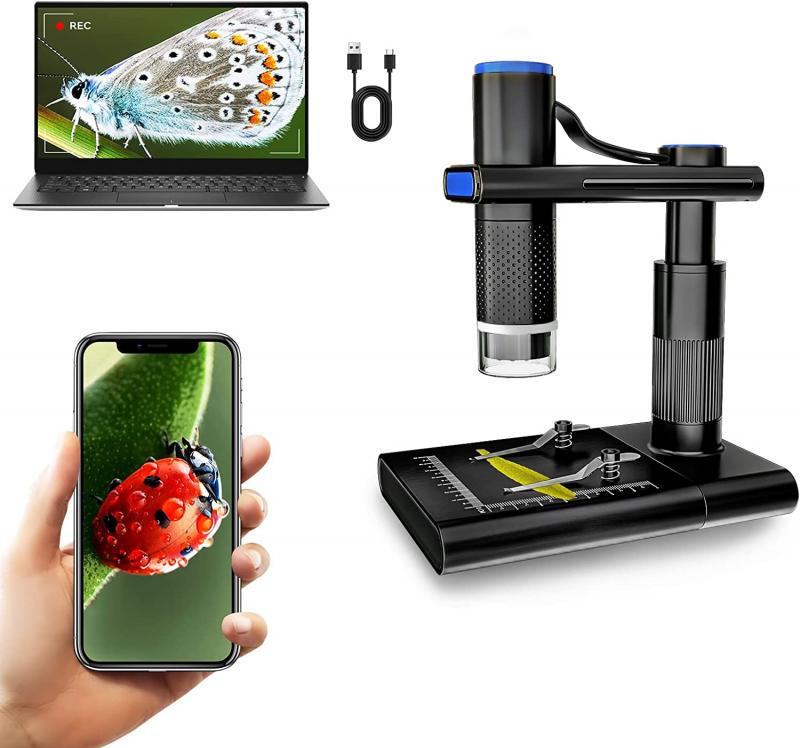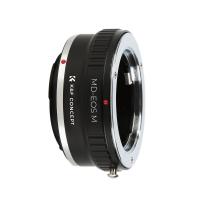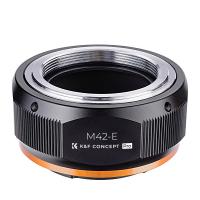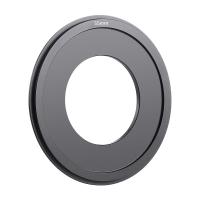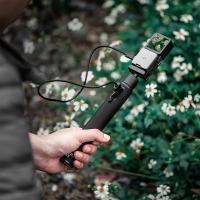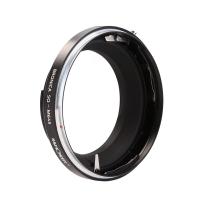When Was The Light Microscope First Used ?
The light microscope was first used in the late 16th century, with the earliest known example being created by Dutch spectacle maker Zacharias Janssen in 1590. However, it was not until the mid-17th century that the microscope began to be widely used for scientific purposes, with notable figures such as Robert Hooke and Antonie van Leeuwenhoek making significant contributions to the field of microscopy during this time. The development of more advanced microscopes in the 19th and 20th centuries, including the electron microscope, greatly expanded the capabilities of microscopy and revolutionized many fields of science.
1、 Invention of the light microscope
The invention of the light microscope is attributed to Dutch spectacle maker, Zacharias Janssen, and his father, Hans Janssen, in the late 16th century. However, the first recorded use of a microscope for scientific purposes is credited to Italian scientist, Francesco Stelluti, in 1625. Stelluti used a simple microscope to observe the structure of insects and plants.
The light microscope has since undergone numerous improvements and advancements, including the development of compound microscopes with multiple lenses and the use of staining techniques to enhance contrast and visibility of specimens. These advancements have allowed scientists to observe and study cells, microorganisms, and other small structures in greater detail.
In recent years, there has been a growing interest in the development of new microscopy techniques, such as super-resolution microscopy, which allows for the visualization of structures at the nanoscale level. These advancements have opened up new avenues for research in fields such as biology, medicine, and materials science.
Overall, the invention of the light microscope has had a profound impact on scientific research and discovery, and its continued development and improvement will undoubtedly lead to further breakthroughs in the future.
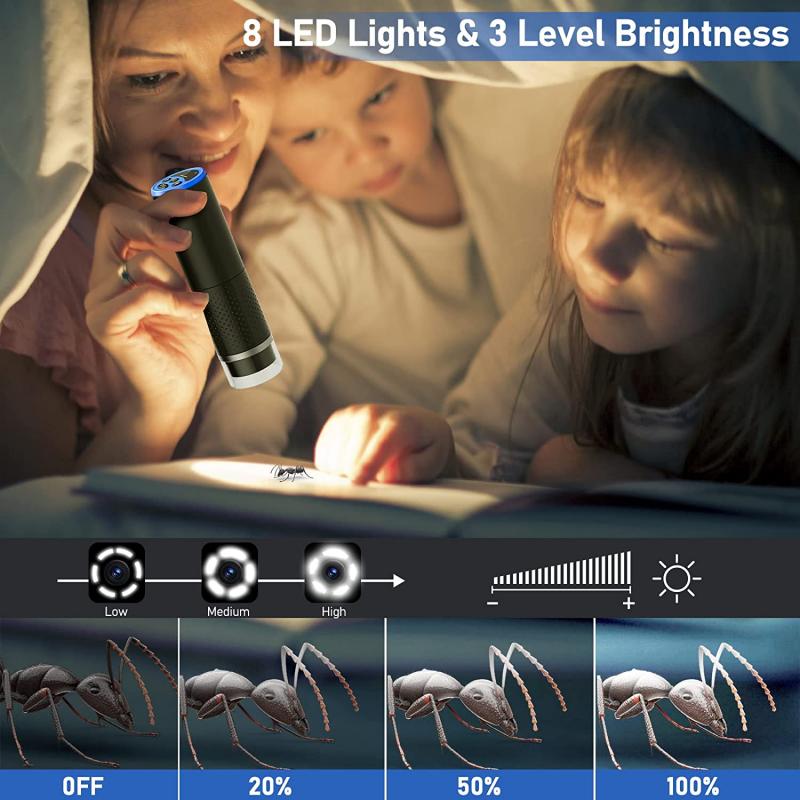
2、 Early use of the light microscope
The light microscope, also known as the optical microscope, is a device that uses visible light to magnify small objects. The earliest use of the light microscope can be traced back to the 16th century when Dutch spectacle makers Hans and Zacharias Janssen created the first compound microscope. However, it was not until the 17th century that the microscope was widely used for scientific purposes.
One of the pioneers of microscopy was Antonie van Leeuwenhoek, a Dutch scientist who used a simple microscope to observe microorganisms and other small objects. His discoveries revolutionized the field of microbiology and paved the way for further advancements in microscopy.
In the 19th century, improvements in lens technology and the development of new staining techniques allowed scientists to observe cells and tissues in greater detail. This led to the discovery of many important biological structures, such as the nucleus and mitochondria.
Today, the light microscope remains an essential tool in many fields of science, including biology, medicine, and materials science. Recent advancements in microscopy, such as confocal microscopy and super-resolution microscopy, have allowed scientists to observe structures at the nanoscale level, opening up new avenues for research and discovery.
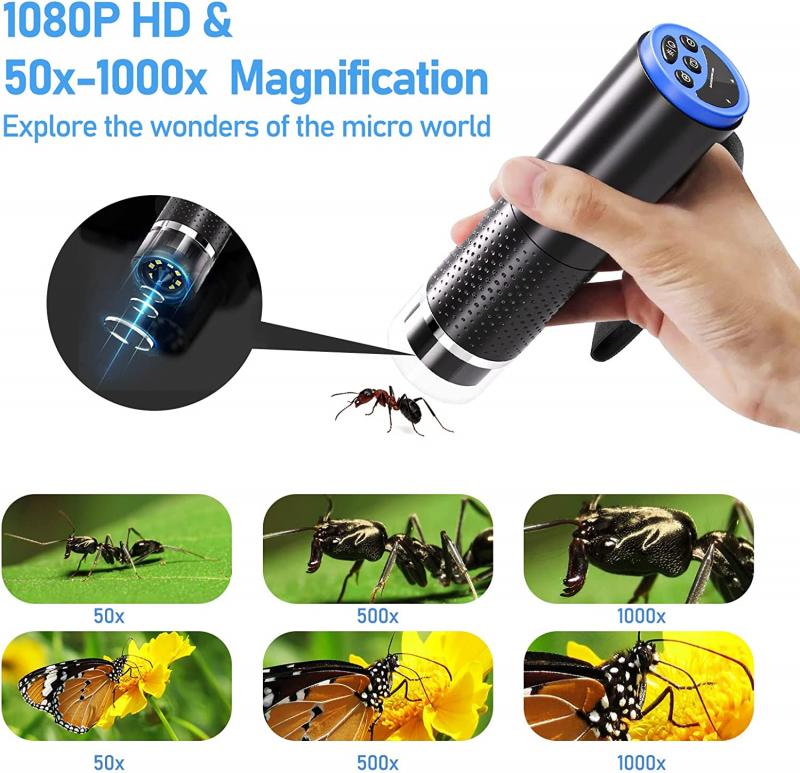
3、 Advancements in light microscope technology
When was the light microscope first used?
The light microscope, also known as the optical microscope, was first used in the late 16th century. Dutch spectacle maker, Zacharias Janssen, is credited with inventing the first compound microscope in 1590. However, it was not until the 17th century that the microscope was widely used for scientific purposes. Antonie van Leeuwenhoek, a Dutch scientist, was one of the first to use the microscope to observe microorganisms, which he called "animalcules."
Advancements in light microscope technology
Since its invention, the light microscope has undergone numerous advancements in technology. One of the most significant advancements was the development of the electron microscope in the 1930s, which allowed scientists to observe objects at a much higher magnification than was possible with the light microscope. However, the light microscope remains an essential tool in many scientific fields, including biology, medicine, and materials science.
In recent years, advancements in light microscope technology have allowed for even higher resolution imaging. Super-resolution microscopy techniques, such as stimulated emission depletion (STED) microscopy and structured illumination microscopy (SIM), have enabled scientists to observe structures at the nanoscale level. These techniques have revolutionized our understanding of cellular processes and have the potential to lead to new discoveries in medicine and materials science.
In conclusion, the light microscope has been an essential tool in scientific research for over 400 years. Advancements in technology have allowed for higher resolution imaging, and the microscope remains a vital tool in many scientific fields.

4、 Applications of the light microscope in biology
When was the light microscope first used?
The light microscope, also known as the optical microscope, was first used in the late 16th century. Dutch spectacle maker, Zacharias Janssen, is credited with inventing the first compound microscope in 1590. However, it was Antonie van Leeuwenhoek, a Dutch scientist, who made significant improvements to the microscope and used it to observe microorganisms in the 17th century.
Applications of the light microscope in biology:
The light microscope has been an essential tool in the field of biology for centuries. It has allowed scientists to observe and study the structure and function of cells, tissues, and organisms. Some of the applications of the light microscope in biology include:
1. Cell biology: The light microscope has been used to study the structure and function of cells, including their organelles and processes such as mitosis and meiosis.
2. Microbiology: The light microscope has been used to observe and study microorganisms such as bacteria, viruses, and fungi.
3. Histology: The light microscope has been used to study the structure and function of tissues, including their cellular composition and organization.
4. Developmental biology: The light microscope has been used to study the development of organisms from fertilization to adulthood.
5. Genetics: The light microscope has been used to study the structure and function of chromosomes and to observe genetic mutations.
Latest point of view:
While the light microscope has been an essential tool in biology for centuries, recent advancements in technology have led to the development of more advanced microscopes, such as the electron microscope and the confocal microscope. These microscopes allow for higher magnification and resolution, which has led to new discoveries in the field of biology. However, the light microscope remains a valuable tool for many applications in biology, and its simplicity and accessibility make it an essential tool for students and researchers alike.
